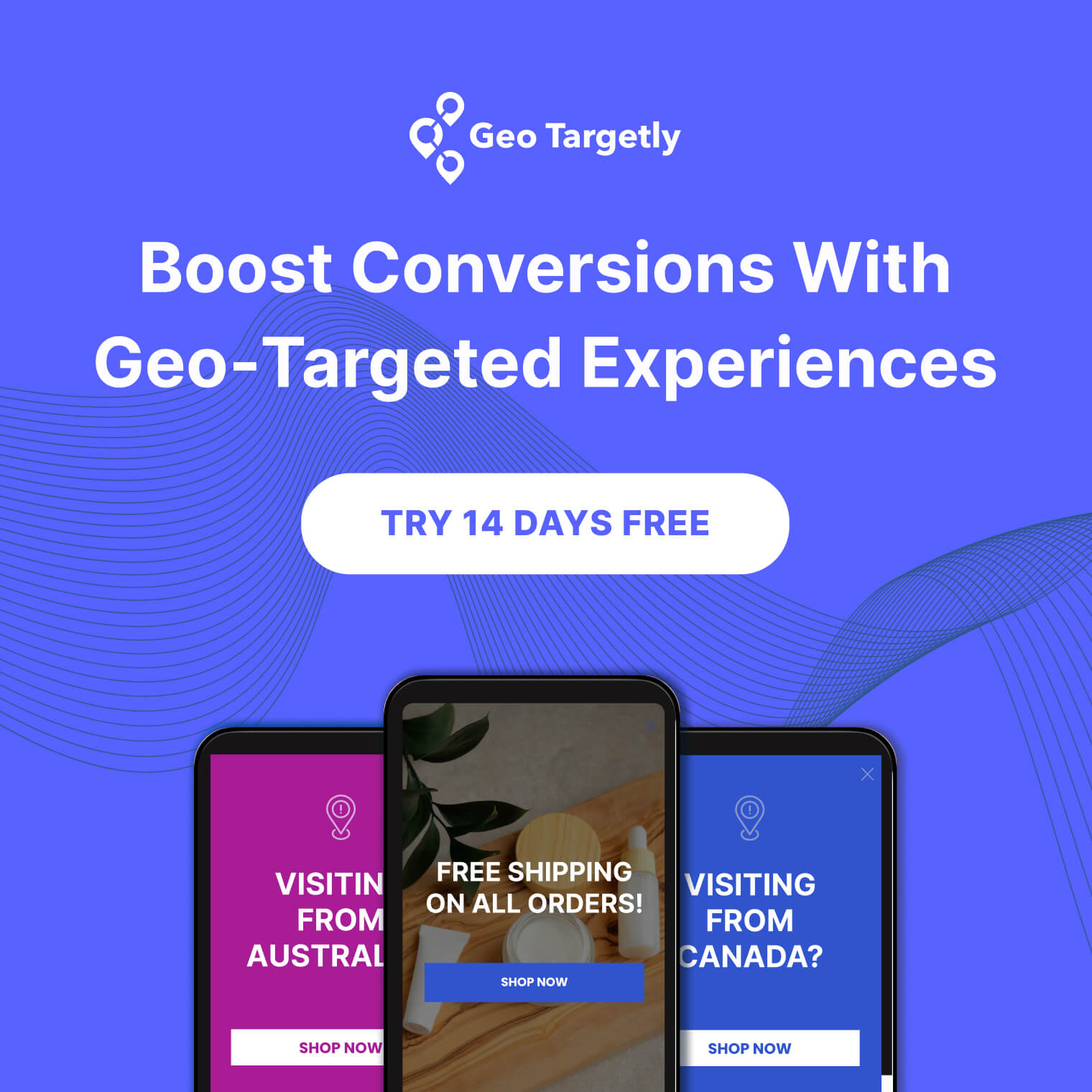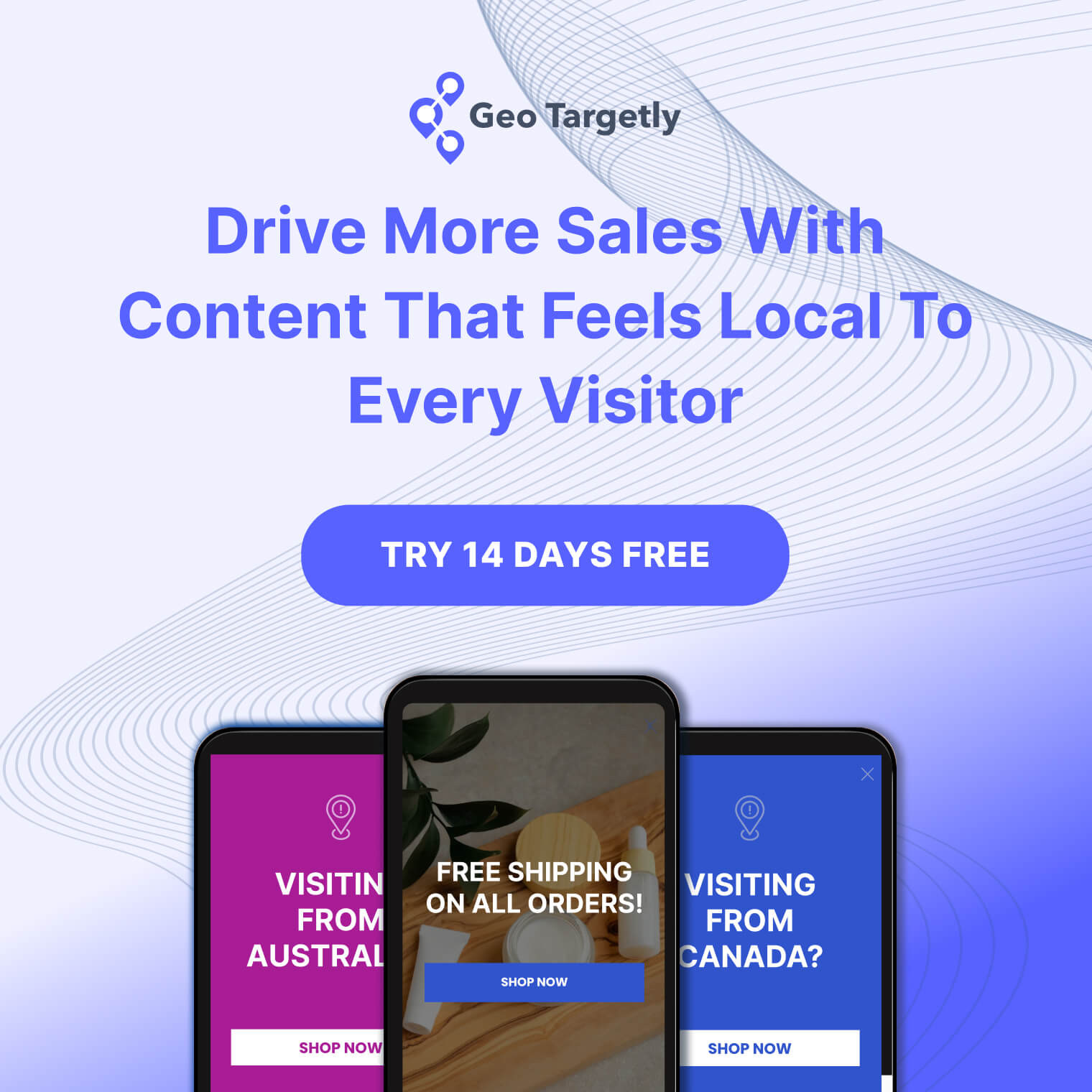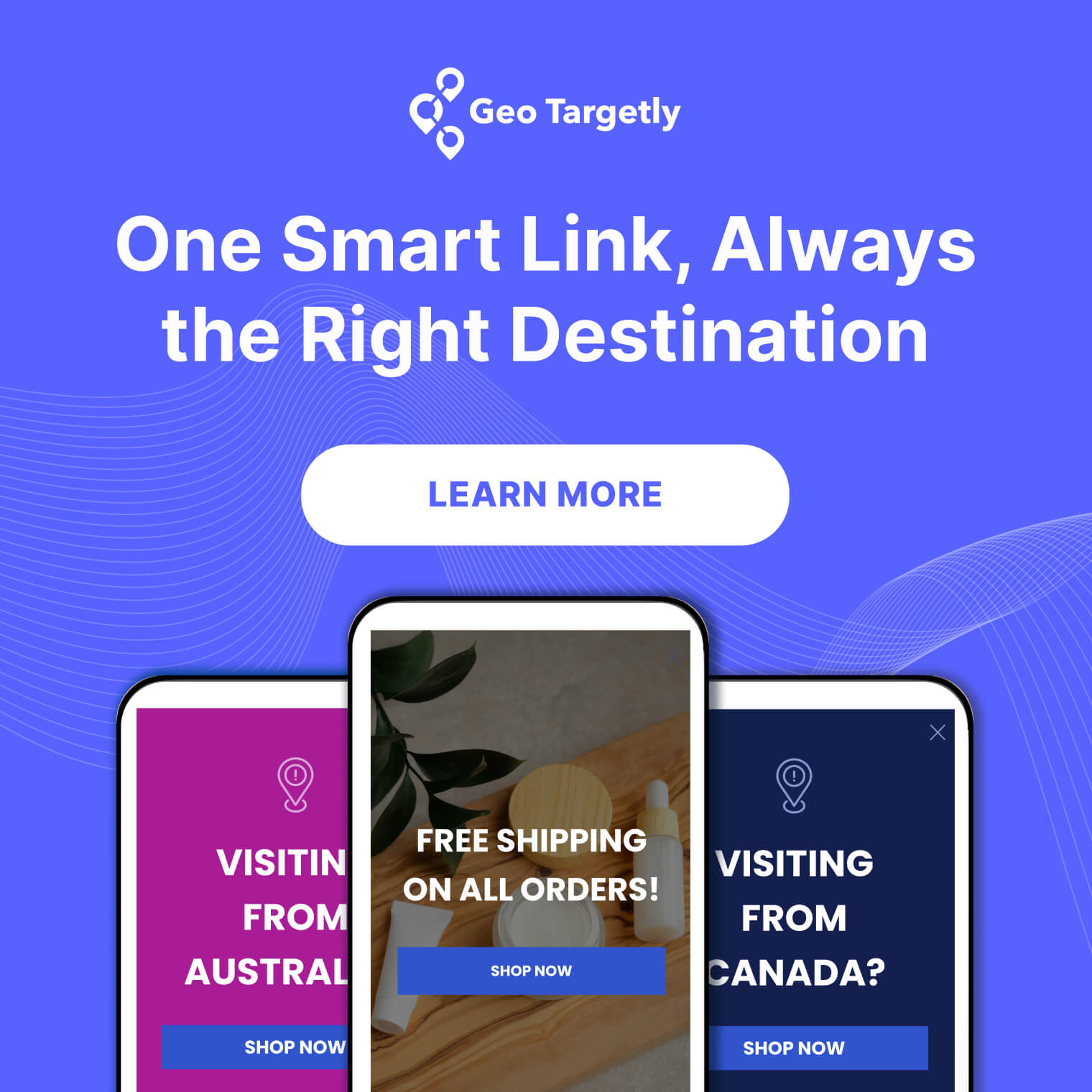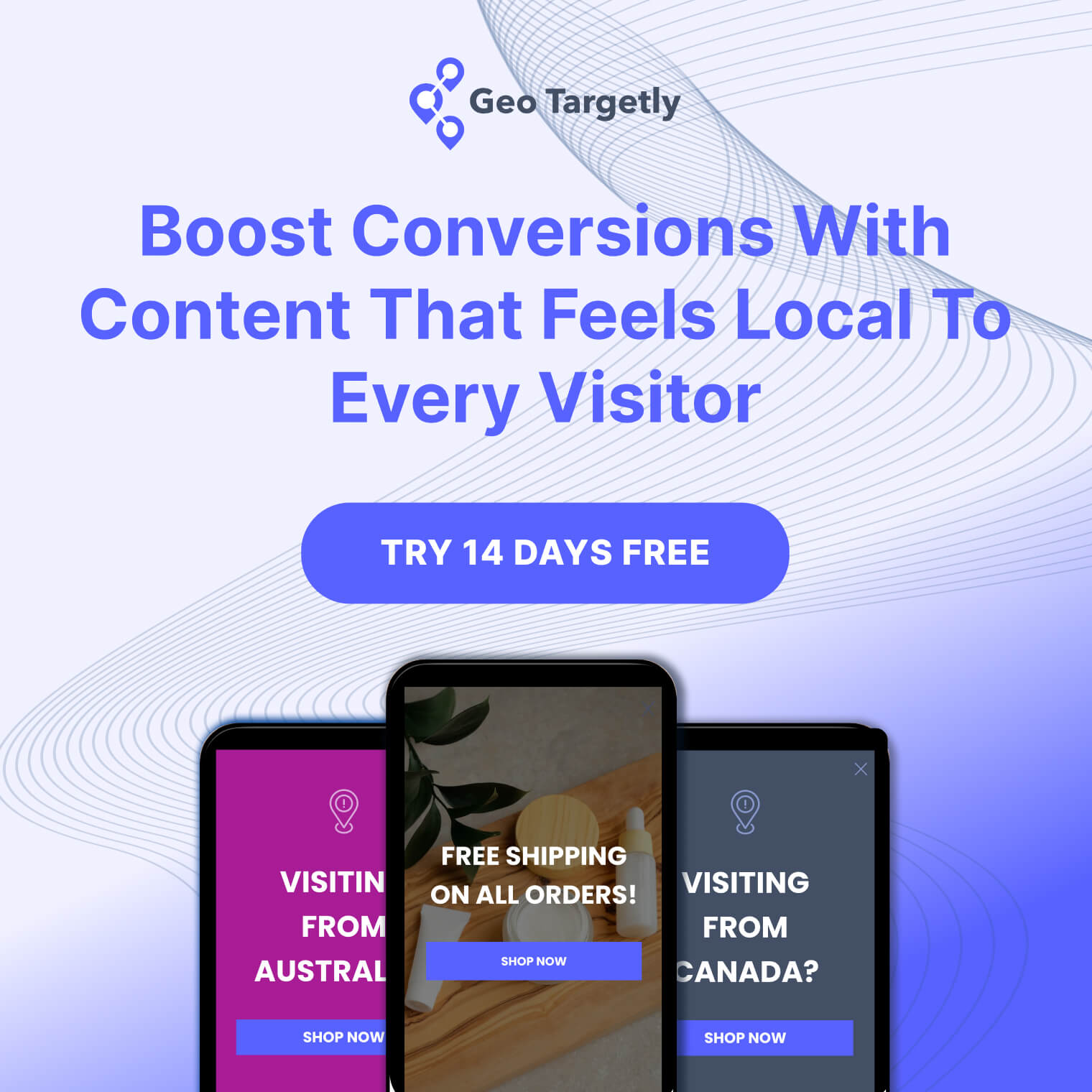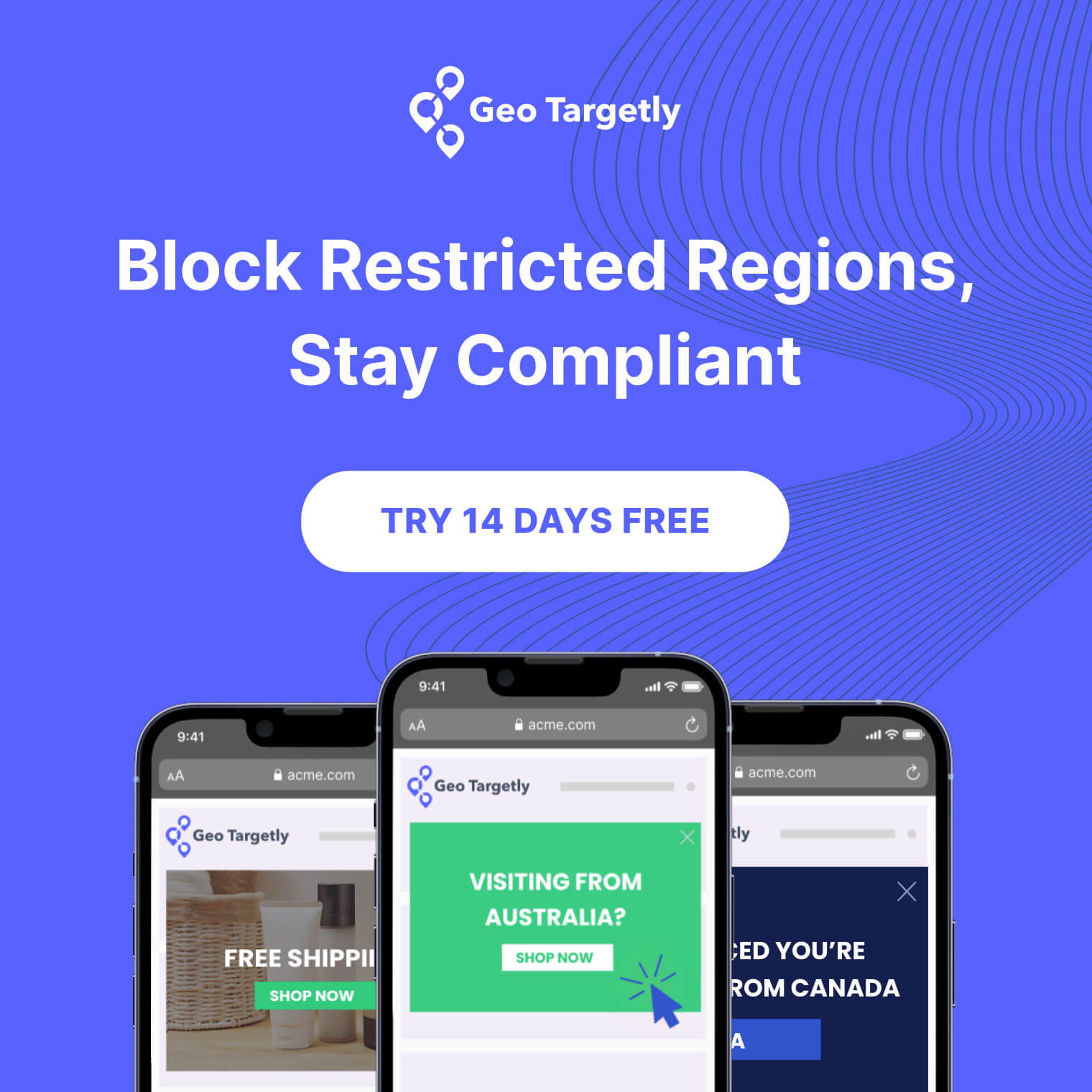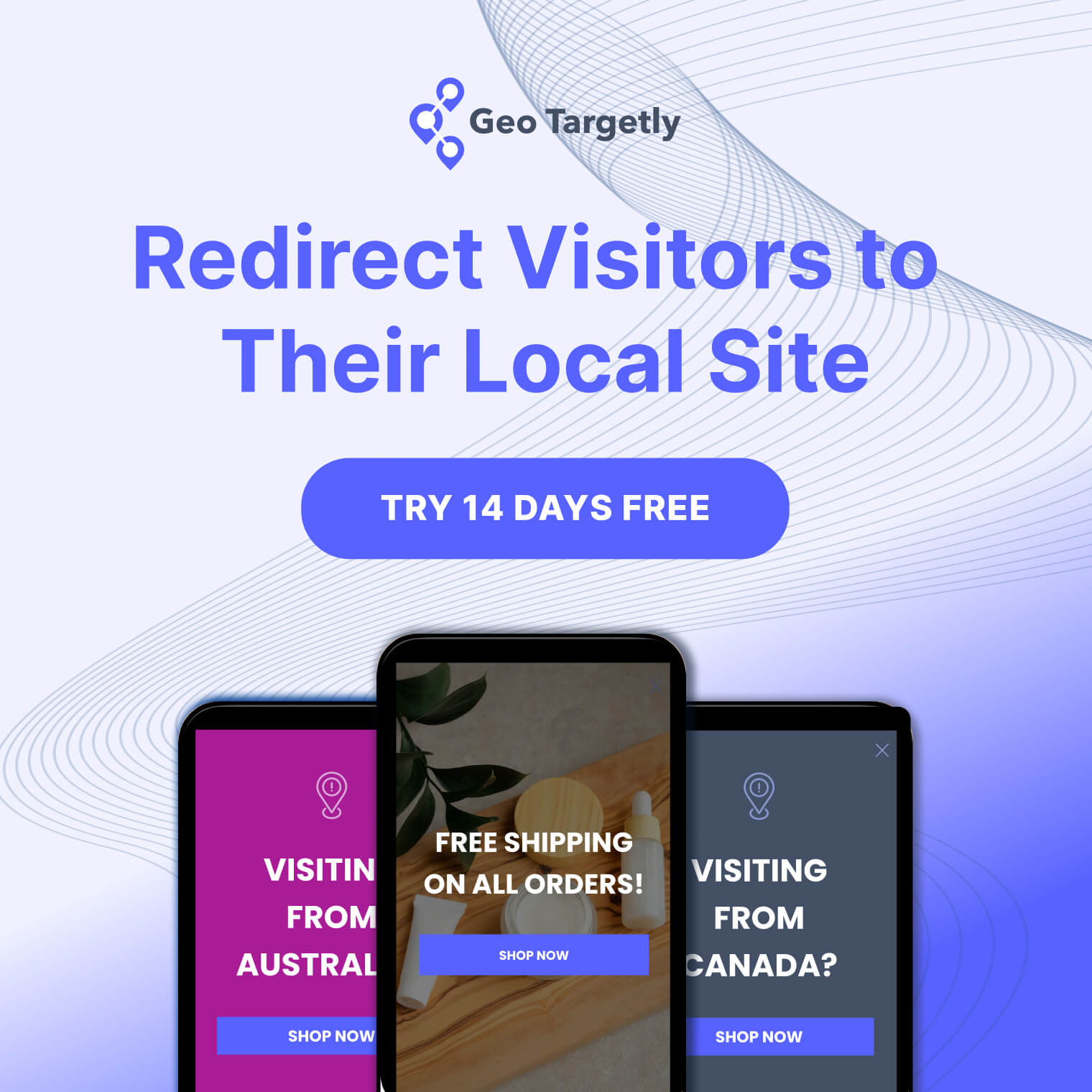

Ecommerce isn’t loosing its grip on the retail world. In fact, by 2027, ecommerce will account for 22.6% of total retail sales worldwide (currently around 19.4%), according to Statista’s research.
With over 27 million ecommerce sites globally, as per Built With Trend’s database, many brands may fail to grow and fulfill their financial predictions s by the end of the year.
Luckily, you can be closer to a profitable online store, with the following ecommerce strategies:
- Finding out what your customers and market really need
- Optimizing your online store so it is user-friendly, visible to new audiences and innovative
In this article, you will learn more about personalization of the customer journey, new ways to reshape familiar marketing channels and hidden gems such as geomarketing and augmented reality.
Understanding your market and customers
Before you take a step further, you need to take a step back and see how your market and customers have changed over the years.

Revise your initial market and customer research with the latest insights or new angles:
Conducting market research
If you’ve been running your online store for a while, there are surely insights about audience demographics and behaviors you can analyze and use. For example:
- Age, gender, location: Use customer account data, billing/shipping addresses, and purchase history to find the age range, gender breakdown, and geographic distribution of your customer base.
- Purchase frequency: Analyze how often customers make purchases, the average order value, and repeat purchase rates to mark down who your most loyal customers are.
- Product preferences: Examine which products, categories, or brands customers tend to purchase to understand their interests or your marketing efforts.
- Device usage: Track whether customers are accessing your site and making purchases on desktop, mobile, or tablet devices to optimize the shopping experience. Use heatmaps (for example HotJar or CrazyEgg) to monitor customer behavior and clicks on different devices.
- Traffic sources: Note which marketing channels, campaigns, ads, and referral sources are driving the most valuable traffic and conversions.
- Cart abandonment: Analyze why customers add items to their cart but don't complete the purchase, to find a pattern and possible reason why.
- Post-purchase actions: Examine customer service inquiries, product returns, and reviews to understand major pain points, doubts, and opportunities for improvement.
By putting all this data in a customer analysis spreadsheet, you will get a clearer understanding of the patterns, pain points, and most successful areas of your product, marketing, customer relationship, and website functionality.
These insights will perfectly outline which optimization strategy is the best when moving forward.
If you don’t have enough data to work with, it is time to keep a close eye on the competitors. Go to ecommerce platforms such as Shopify or Magento, and write down all online stores that sell the same or similar products as yours.
Pick the top ten, and see what they are doing:
- What is their checkout process like?
- What do their reviews say?
- How many product categories do they have?
- How do they educate their customers?
- What is their return policy?
- What are their bestsellers?
- Do they target their customers with ads, and where, and how?
The best way to get an insider scoop is to get your hands dirty and make a purchase, let them target you, ask their support questions, and see the products for yourself.
This way you will get a real life experience, directly see the pros and cons of your competitor's business and find a potential market gap.
Personalizing customer experience
According to McKinsey’s research, personalization often results in a 10 to 15% increase in revenue, therefore it is one of the top priorities for online businesses in the upcoming years.
“Brands that can predict the desires of their online customers, and push relevant and inspirational content to them based on those desires, will see huge success in the coming years. Those who don’t will fall behind,” says CEO of FindMind Michelle Bacharach.
To not spam and annoy customers with your marketing efforts, make sure your product recommendations are tailored and backed up by data.
- Use purchase history data: Analyze this information to suggest items they're likely to be interested in based on their previous purchases.
- Personalize based on browsing behavior: Track customers' onsite activity, such as the pages they visit, the products they view, and the links they click. Use this behavioral data to make relevant product recommendations.
- Segment customers using first-party data: Collect customer data through optional quizzes, surveys, and account preferences. Divide your customer base into distinct segments based on factors like demographics, interests, and purchase frequency. Then, craft personalized recommendations for each segment to increase relevance and appeal.
You can embody personalized recommendations in your checkout page, email/ text marketing campaign, in-store messages, etc. Here is how one ecommerce business does it on the checkout page:

Optimizing your online store
After thorough research, it is time to make changes to your ecommerce website by optimizing your online store in various aspects:
Enhancing user experience (UX)
If a potential customer browses your ecommerce store and can’t find what they need in a couple of minutes, there is little to no doubt they will vanish.
A high exit-intent rate in most cases is influenced by poor UX (user experience). The two main things that influence how a user interacts with your website are site navigation and mobile responsiveness.
Pro tip: capture your visitor's attention before they leave with an exit-intent popup tool.
An in-depth research of 20+ ecommerce websites by Portent reveals that a website that loads in 1 second has a conversion rate 5x higher than a site that loads in 10 seconds.

The first thing to do is to check your website speed with Page Speed Insights, or Mangools SEO extension. If your store’s page speed is more than 4 seconds, you need to invest some time into reducing it.
You can implement lazy loading, optimize CSS delivery, reduce server response errors, and enable browser caching to boost your score.
For your ecommerce store, it is important to:
- Implement a clear category structure: Organize products into intuitive, hierarchical categories and subcategories to help customers find items quickly. Use descriptive labels and breadcrumbs to guide navigation.
- Optimize search functionality: Provide a prominent, intelligent site search that allows customers to easily find products by keywords, SKU, or other attributes. Integrate search suggestions and results tailored to user intent.
- Make the checkout process intuitive: Minimize clicks and form fields to create a frictionless checkout experience. Allow guest checkout, offer order status tracking, and provide multiple payment options.
- Prioritize the mobile experience: Ensure your site's layout, navigation, and design are fully optimized for mobile devices. Prioritize thumb-friendly menus, mobile-first content hierarchy, and fast page load times.
Here is what a well-organized category page looks like:

Learn more about UX
- Read this comprehensive guide on SEO and UX.
- Watch this video on how to make a mobile-friendly website.
- Listen to this podcast about the latest UX trends.
- Learn how URL shortening improves UX.
Search engine optimization (SEO)
SEO for ecommerce stores helps buyers find the products they search for easily.
For example, if someone is googling “bicycle shorts for women” if optimized with keywords and metadata, your store should appear at the top.
Here is how to optimize your store:
- Research and target specific product-focused keywords using tools like Google Keyword Planner, Mangools, or look what your competitors are using
- Include long-tail product keywords that match customer search intent (e.g., “waterproof hiking shoes for women”)
- Place primary keywords strategically in URLs, titles, and headers
- Incorporate local keywords if you have physical stores (e.g.,“ hiking shoes Atlanta”)
- Use keyword variations naturally throughout category and product pages
- Track keyword performance and adjust strategy based on search rankings and traffic in Google Search Console and Google Analytics 4.
As for product descriptions, write unique, detailed descriptions for each product (avoid manufacturer copies). Include key product specifications, features, benefits, and product attributes (size, color, material) in a scannable format.
Don’t forget to optimize meta titles with primary keywords (keep under 60 characters), and meta descriptions that drive clicks (150–160 characters).
Add relevant alt text to all product images and use structured data markup to help search engines understand product information.
Here are examples of product descriptions:

Learn more about SEO:
- Go through the SEO academy to learn the ins and outs of SEO.
- Sign up for the WTS newsletter to keep an eye on SEO events.
- Follow this Subreddit for the latest SEO news.
Social media marketing
Apart from your online shop, another great place to promote your products and engage your customers is through social media. After doing research and figuring out if most of your target audience is on Facebook, Instagram, or TikTok.
For any social media, make sure you display your products in good lighting, with an interesting background, change frames, and use trendy songs.
Most ecommerce brands have UGC (user-generated content) that displays how customers use their products. Make your social media account a place for the latest news, updates, how-to guides, and community gatherings.
Here is how an ecommerce shop uses social media:

If you know who your target audience is following, but they don’t know about your brand, you can reach them through influencer partnerships.
Your target audience already knows them and trusts them to a point, so they will find their words more convincing.
Here is how an influencer prompts products on their social media page:

Learn more about social media marketing:
- Follow this YouTube channel for tutorials on social media marketing.
- Check out this free online course for the basics of SMM.
- Check out Pretty Little Marketer on Instagram for the latest social media news.
Email marketing
Email marketing is important is a great growth strategy for ecommerce brands since:
- It is a direct channel to communicate with interested customers
- You have full control over messaging and timing
- It has measurable results and clear analytics
- It is great for both potential, new, and returning customers
Amerisleep increased checkouts by 14% with a cart abandonment email strategy.
To build an email list, you first need to convince your customers to leave their email addresses.
You can do that through compelling opt-in incentives such as first-purchase discount codes, exclusive access to sales, free shipping offers, or product guides.

Segment your customers based on interests, purchase history, average order value, geographic location, shopping frequency, etc.
Then create targeted email marketing campaigns such as welcome series, abandoned cart reminders, post-purchase follow-ups, birthday specials, etc.
Here is an example of a personalized welcome email:

Learn more about email marketing:
- Check out the free email marketing course on HubSpot.
- Watch this YouTube video about email marketing strategies.
- Read this article on best ecommerce newsletter ideas to get inspired.
Pay-per-click advertising (PPC)
A part of your customer base is actively searching for your product(s), such as Googling and comparing competitors. Most of your potential customer base isn’t, but they are casually using social media.
PPC (pay-per-click) ads are great when reaching a highly targeted audience, capturing high-intent buyers and scaling based on performance.
Icy Bear spent £12K on Google Ads and ended up with 13X ROAS (return on ad spent). In their case study, Icy Bear’s team explained in detail how they used performance max campaigns and branded searches to achieve these results.

Google ads strategy
Start with Shopping campaigns to showcase your product catalog and complement them with Search campaigns for branded terms.
Implement Dynamic remarketing to re-engage past visitors, while using Display ads to build brand awareness. Performance Max campaigns can help automate optimization across Google's networks.
To optimize your campaigns effectively, focus on several key tactics. Use negative keywords to eliminate irrelevant traffic and concentrate on high-converting search terms.
Monitor and adjust bids based on device performance, while targeting specific geographic locations for better relevance. Learn more about geofencing here.
Regular product feed optimization and proper conversion tracking setup are very important if you want a great ROAS.
Social media advertising
Choose your platforms strategically based on your target audience.
Facebook and Instagram work best for B2C products, TikTok is ideal for reaching younger demographics, and LinkedIn remains the go-to platform for B2B products, particularly in industries like industrial and SaaS.
Your campaign types should be diverse and purpose-driven:
- Dynamic product ads to showcase your catalog
- Collection ads for product discovery
- Story ads to build brand awareness
- Carousel ads to feature multiple products
- Video ads to drive engagement
How to do effective targeting for social media success? Build lookalike audiences from your existing customers and retarget website visitors.
Target users with similar interests to your current audience, use customer list targeting, and segment by demographic data for precise reach.
Learn more about PPC:
- Follow this Subreddit for news and the latest insights on PPC.
- Explore this extensive PPC guide to learn how to run PPC ads.
- Watch this YouTube video for a breakdown of a successful PPC campaign.
Diversifying inventory
Diversifying your ecommerce store’s inventory is a great growth strategy with multiple benefits.
It reduces dependency on single products or suppliers, protects against supply chain disruptions, and expands your customer base.
Plus, diversification helps increase average order value through cross-selling opportunities while minimizing seasonal revenue fluctuations.
Happy Box 10x their revenue, partly by tapping into another market — corporate gifts.
Implementation should follow a smart, strategic approach. Start by introducing products related to your bestsellers and test new items in small quantities.
Focus on complementary products that enable cross-selling, and consider expanding into logical adjacent categories.
When selecting new products, prioritize:
- High-margin items
- Private label opportunities
- Products with strong market demand
- Items that complement existing inventory
- Seasonal variations of successful products
An example of displaying various products to customers on the checkout page:

Implementing dropshipping
Dropshipping is a top growth strategy for ecommerce businesses because it minimizes risk and maximizes scalability.
This model eliminates the need for inventory storage and upfront product investment, allowing businesses to test new markets and products with minimal financial risk.
By partnering with reliable suppliers who handle storage, packaging, and shipping, businesses can focus on marketing, customer service, and business growth.

With dropshipping you can easily:
- Test new products without bulk purchases
- Quickly adapt to market trends
- Easy entry into new niches
- A/B test different product variations
- Validate demand before investing
Learn more about dropshipping:
- Read all about dropshipping from A-Z in this article.
- Watch this successful dropshipping case study.
Providing exceptional customer service
Exceptional customer service is a hidden gem when it comes to ecommerce growth strategies. Simply by being kind and resourceful when talking to your customers, you can leave a great impression and even become a trendy story.
For example, Chewy became one of the most popular ecommerce dog brands after a Tweet about their customer service went public. Here is the full case study on their exceptional customer service.

What you can immediately do for your customer service:
- Offer live chat for instant communication with your customers
- Have a fully transparent refund policy
- Have an easy return policy
- Reply to your customers kindly and with respect
- Follow up with your customers after they’ve made a purchase
- Offer real-time tracking options
Here is another example of good customer service:

Encouraging customer reviews
Products with reviews have a 270% higher conversion rate than those without, according to a Spiegel report. Therefore, you should display reviews and testimonials prominently so new visitors can see them right away.
Here is an example how to encourage reviews in your welcome emails:

Here is what reviews look like in an ecommerce store:

Learn more about the importance of customer reviews:
- Watch this engaging video on how to ask for customer reviews.
- Read this article on how to reply to customer reviews.
Loyalty programs and incentives
Loyalty programs are a great way to encourage repeat purchases and offer exclusive deals to loyal customers.
A customer can earn points or qualify for a reward by being a loyal customer, leaving a review, sharing their UGC, referring your product to a friend, or helping you grow your business in other ways.
Here are some great examples of ecommerce loyalty programs:
Farfetch offers multiple tiers from bronze to private clients based on how loyal the customer is. They treat their customers with welcome, birthday, and private member sales as rewards.

Shein offers points that can be used as credits in their online store when a happy customer leaves a review.

Edgar Cooper used gamification to engage their customers and treat them with rewards. By completing certain tasks, customers earn points to later spend on feeding rescue dogs, planting trees, or earning a discount on their next order.

Tracking key performance indicators (KPIs)
How to know if your ecommerce marketing strategy is working? Monitor metrics like conversion rates, average order value, and customer acquisition cost in your Google Analytics.
You can create separate events for all your marketing campaigns and directly measure the success of your efforts.
Here is a good tutorial on how to set up Google Analytics 4 and measure your KPIs.
A/B testing
To truly measure how your audience reacts to your website elements, experiment with different website elements (e.g., call-to-action buttons, headlines).
Track and compare different website elements over a period of time to get data-backed information on your user experience and preferences.
Vitamin Boat Corp tested shared that adding just one word increased the conversion rate by 89.97%, in this case study.
“Time your tests strategically. Seasonal variations, day of week, and traffic patterns can have a huge effect on results. Run tests long enough to capture natural user behavior cycles, typically 2–4 weeks depending on your traffic volume. Also, segment, segment, segment. Different user groups might respond differently. What works for mobile users might fail for desktop, what converts new users might not work for returning customers” Kiril Bunin, CMO
International shipping
If you aren’t offering international shipping, you are missing out on a huge business opportunity while leaving too much space for competitors to easily fill.
Once your business has reached a certain success point in your country/ continent, it is time to expand.
Offer worldwide shipping options at fair costs, so you can reach a wider target audience.
An even better tip is to localize website content for different regions, so users from different regions only see products, content, and shipping options relevant to them.
Here is what it looks like in practice:

Ready to make geo pop-ups, content, and redirects? Try GeoTargetly for free, and see how your revenue increases when you segment your target audience by geolocation.

Multi-channel selling
If you are only selling on one platform, you are limiting your customer's options. Just like with international shipping, you should make the buying process as convenient as possible for the customer.
Upload your products on platforms like Amazon, eBay, and Etsy to expend your business opportunities and grow your ecommerce shop.
Just don’t forget to sync inventory across all sales channels, so your customers don’t have a disappointing experience if something is out of stock.
Take a look at this multi-channel selling tutorial, or take a look at this interesting Reddit thread with real-life experiences.
Implementing artificial intelligence (AI)
In the upcoming years, artificial intelligence will play a huge part in ecommerce, by automating manual tasks and helping boost user satisfaction.
One particularly good implications are chatbots for customer service. These chatbots offer instant customer support, answer FAQs, and provide personalized shopping experiences.
Ad Hock Atelier increased the conversion rate from 0.35% to 0.9% with a live chat tool, as per this case study.
Even though AI for customer services resolves basic customer needs, helps with up and cross-selling and offers 24/7 live support, some inquiries still need a human touch.
Augmented reality (AR) experiences
The latest innovation in ecommerce that can lead to huge growth is augmented reality. The main reason why some people prefer offline vs. online shopping is the fact they can see how the product looks in real life.
With AR, it is possible to see the product “in real life” or at least get a much better impression than with images/videos.
Fenty Beauty has successfully implemented AR by allowing customers to try a shade online.

The social media platform Snapchat developed a mascara try-on filter for L’Oréal, a foundation filter for Maybelline, and a nail polish try-on filter for Essie.

Conclusion
In this article, you saw various ecommerce growth strategies from using AI and virtual reality, to marketing, customer support and loyalty programs.
With real-life examples, case studies, and tutorials for in-depth research, you are equipped to try any of these strategies. Finally, don’t forget to A/B test different aspects and measure results in your GA4.





.webp)










